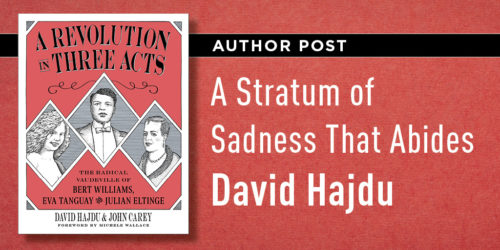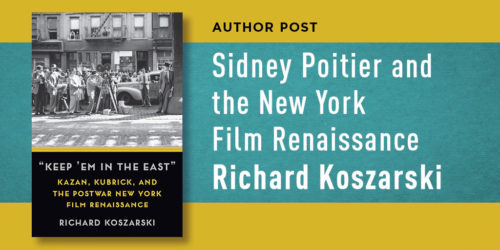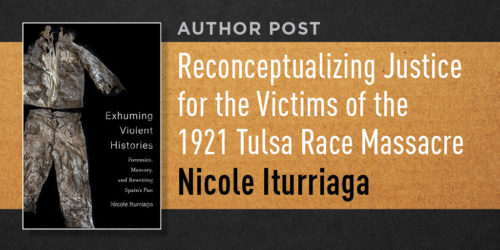Revised Excerpt from the Epilogue of The Sexual Politics of Black Churches Josef Sorett

The Sexual Politics of Black Churches began as an idea that grew from an event organized in response to a set of public debates over ten years ago. Surprisingly, what the book presents to readers is no less relevant today, even as the social context and conversations taking place around the book’s subject have significantly changed.
At the time of the book’s genesis, the push to legalize same-sex marriage was building steam, but had won a legal victory only in the state of Massachusetts. Then came the election cycle of 2008, which at the national level ushered Barack Obama, the country’s first black president, into the White House. Amid the wave of postracial euphoria occasioned by Obama’s election, the nation’s progressive bona fides were thrown into relief when California—the state with the largest population and one of the most liberal states in the union—simultaneously passed Proposition 8, which outlawed same-sex marriage.
There’s no need to recount the details of the 2008 election cycle further here. The book’s introduction covers this period to help capture how “gay vs. black” became a popular caption at that time. More to the point here, black churches were blamed for this blemish on the body politic. With this scapegoating came a new wave of interest in a seemingly foreign institution that has long stood center stage in the history of American culture and politics. Indeed, this contradiction—black church as problem and promise—created the conditions of possibility for an event and subsequent project that became the context for this book—including the convening that is transcribed in its first chapter. The assumption, better understood as a question, then: Were black churches a formidable problem for a growing marriage equality movement?
Even still, the scandal that is the antigay sermon or the ex-gay confession is a relatively recent phenomenon compared to a much longer history of sex scandals that have turned black churches into fodder for media spectacles.
To be sure, black churches proved not to be too much of an impediment, as Proposition 8 was overturned a handful of years later. Now, in 2022, marriage equality is almost an afterthought, even as the years since have produced a steady stream of pushback against protections for LGBTQ citizens. Marriage was the issue then; now debates swirl around the Equality Act. But, as was clear then, black churches and the communities they serve were never the real obstacles to achieving marriage equality, just as winning marriage equality was never the solution to the range of problems that constrained black lives—and black LGBTQ lives, in particular—in the twenty-first century. This awareness lent an unevenness to the first conversations where the ideas for this book took shape. Marriage was the major political issue driving the national dialogue on sexual and gender equality. Still, it was not identified as the primary concern shaping discussions about the inclusion of black LGBTQ folk within the context of black churches and communities, or into the body politic in general. This disconnect is even clearer after nearly a decade of the Black Lives Matter movement that developed in response to a steady stream of anti-black violence broadcast across the airwaves and on the heels of four years of a Trump presidency.
Recognizing that debates about marriage equality provided the context, if not the motivations, for this anthology helps to capture the contradictions and questions that animate the book’s chapters. If not election cycles, one might ask, what are better contexts in which to understand the sexual politics of black churches? The controversy that developed around gospel singer Kim Burrell’s 2016 antigay sermon, also detailed in the book’s introduction, fails to provide a much more helpful frame. That said, the outing of Burrell’s homophobic preaching (and her subsequent partial canceling) does provide us with another common lens through which the sexual politics of black churches often garners attention beyond that of the congregations or communities they serve—namely, a scandal. One thinks immediately of another (even more) popular gospel artist and preacher, Donnie McClurkin. He made headlines in 2007 when he declared that he had been “healed” of homosexuality not long before appearing at a campaign rally for then-presidential candidate Barack Obama. Ex-gay speeches and antigay sermons of this sort led to the “gay vs. black” storyline. Notably, McClurkin’s testimony of professed healing once again made headlines in 2021, following an interview on TV One’s Uncensored, just as this anthology was going to production.
Even still, the scandal that is the antigay sermon or the ex-gay confession is a relatively recent phenomenon compared to a much longer history of sex scandals that have turned black churches into fodder for media spectacles. Here one thinks immediately of the story of Clarence Cobbs, detailed by Wallace Best in chapter 5 of The Sexual Politics of Black Churches. A much longer list of examples would include names like Adam Clayton Powell Jr., C. L. Franklin, Prophet James Jones, Henry Lyons, and much more recently, Bishop Eddie Long; but also, perhaps, the postmortem fascination with the sex lives of Malcolm X and Martin Luther King Jr., still by far the nation’s two most readily recognized black religious leaders.
The point is to ask: what do we learn and what additional questions emerge when neither scandal nor election cycle is driving the conversation?
The point here has also not been to suggest an exceptional or celebratory story of black churches. It has been, instead, to recognize the significance of an evolving national context while also shifting more attention to how the sexual politics of black churches are shaped by but also depart from and exceed the national storyline—be it a growing marriage equality movement or the latest sexual scandal. In helping to facilitate this shift of gaze, The Sexual Politics of Black Churches perhaps raises as many questions as it answers. The point is to ask: what do we learn and what additional questions emerge when neither scandal nor election cycle is driving the conversation?
What are the cultural contexts, discursive frames, and languages around and through which black churches, and the communities they serve, have cultivated a set of practices for negotiating the normative religious and civic logics of sex and sexuality (and gender) of the nation?
How have such negotiations created space for affirming black sexual difference (and black LGBTQ lives, specifically) and reinscribed, deepened, and amplified longstanding practices of exclusion?
And what are the constraints and possibilities that shape black lives—and black LGBTQ lives, in particular—after (marriage) equality?
Josef Sorett is professor of religion and African American and African diaspora studies at Columbia University, where he also directs the Center on African-American Religion, Sexual Politics, and Social Justice. He is the author of The Sexual Politics of Black Churches.
Related Posts
-

-

-

-

-

-
 African American / Black Studies / American History / American Sociological Association / Author-Editor Post/Op-Ed / Black History Month / History / Human Rights / International Studies Association / Sociology
African American / Black Studies / American History / American Sociological Association / Author-Editor Post/Op-Ed / Black History Month / History / Human Rights / International Studies Association / SociologyReconceptualizing Justice for the Victims of the 1921 Tulsa Race Massacre
Nicole Iturriaga
-

-

